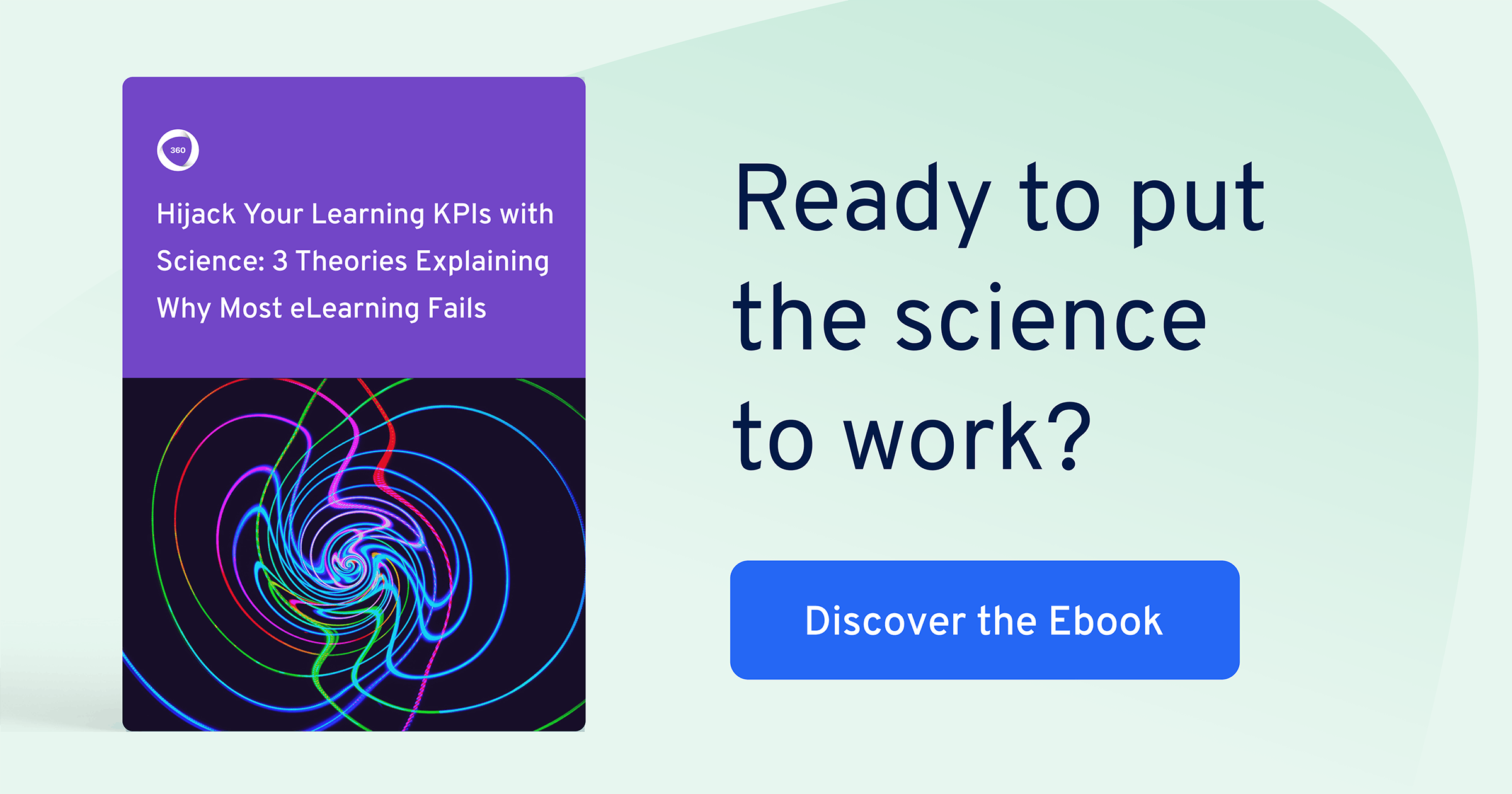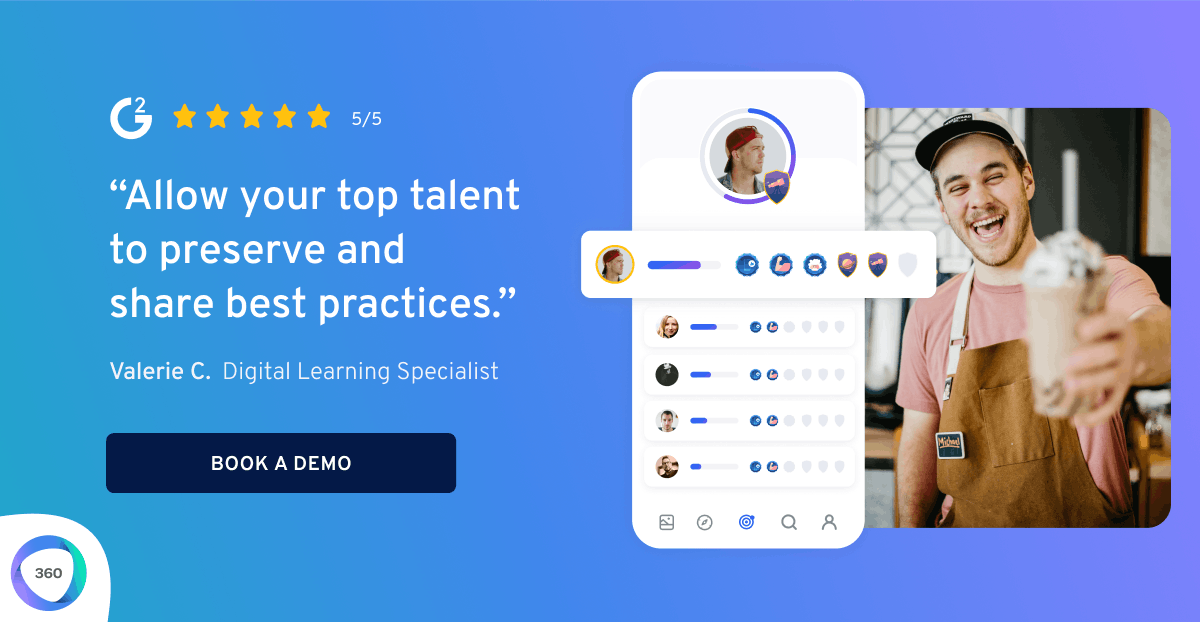Much of how we learn as adults is shaped and defined by our experiences with early education. But what does this mean for the ways we learn in the workplace?
UK organisations have to embed learning processes that support learner interactions, help employees hit their targets, and improve organisational performance. As L&D professionals, we must help learners retain the information they’ve learned and apply it over time. Unfortunately, this is still proving difficult for UK businesses. As a result, 61% of working-age adults don’t think they have all the skills they need for the next 5 years, according to a recent study.
This makes it crucial for us as UK L&D leaders to develop a solid grounding in core learning concepts, ensuring our workplace learning processes help increase learner retention and improve performance. In this article, we’ll delve into the psychological foundations of learning and how they can help us promote better learning processes. From Collaborative Learning to peer-led learning, this post covers it all.
The 4 essential steps of the learning process
While learning has evolved, the psychological learning theories of how we learn remain the same, and form the basis of all great organisational learning strategies. These are the four essential steps of the learning process you need to know.
1. Unconscious incompetence
The first learning stage is unconscious incompetence. This refers to a learner not being aware of a gap in their skill or knowledge.
Let’s take a look at an example of unconscious incompetence in action.
Henry is an L&D Manager. The L&D team has recently implemented a new learning management system, which features a discussion forum—a great way to connect learners with subject-matter experts so that questions can be addressed and answered quickly. But Henry doesn’t realise the subject-matter experts have highly specialised areas of focus, and as a result, he connects learners with the wrong subject-matter experts.
2. Conscious incompetence
Conscious incompetence is when a person realises they have a missing knowledge gap. Let’s go back to Henry. After his first mistake, Henry realises he doesn’t know the structure of the organisation properly, and who’s an expert in which subject area. This is an example of conscious incompetence.
3. Conscious competence
Conscious competence refers to the skills required through training, repeated participation, and practice. Looking back at Henry, his training involves putting together an organisational chart which he references whenever he needs to match a subject-matter expert to a learner in the discussion forum on the LMS platform. As a result, he can master this knowledge.
4. Unconscious competence
Unconscious competence is the final learning process stage. This describes a person who has gained sufficient knowledge to perform the task without active thought. For Henry, this means he now knows who all the subject-matter experts are without needing to refer to his organisational chart.
These four essential steps help us understand the learning process and better still, how we can achieve unconscious competence in our daily jobs. Now that we’ve covered these four steps, we can look at another key question: how does the learning process differ between individuals?
Want more learning theories backed by science? Download our ebook: Hijack Your Learning KPIs with Science: 3 Theories Explaining Why Most eLearning Fails
The 7 foundations of learning
We’ve covered the core stages involved in the learning process. But what about how we learn?
We are all created differently—that’s why the learning styles we respond to are also different. It’s important that you, as an L&D manager, develop training that incorporates all these different learning styles so that you cater to every one of your learners’ needs and preferred learning styles. You need to consider the following learning styles:
- Visual: Learning through pictures, graphs, charts, and videos.
- Aural: Learning through sound and music.
- Verbal: Learning through spoken or written words.
- Physical: Learning through the body, hands, and a sense of touch. In-person training/synchronous learning constitutes a physical learning style.
- Logical: Learning through logic, systems, and reasons.
- Social: Learning through groups or talking to people. Peer-led training is social-based learning.
- Solitary: Learning individually through self-study or individual assignments. Independent online training or asynchronous learning is an example of solitary learning.
These learning styles underpin the foundations of your learning and development strategy. Whether it’s peer-led training, blended learning, asynchronous and synchronous learning, or Collaborative Learning, these methods are all built on different styles. So how do you use these styles to help promote a better learning process in your organisation?
4 top ways to promote a better learning process at work
As an L&D professional, learner retention is likely a challenge you’re familiar with. Research suggests that within 24 hours, people forget an astonishing 70% of the information presented. That’s a lot of wasted time and effort—not just for learners, but for L&D teams, too.
There will always be some level of information lost—the forgetting curve, backed by science, tells us that. However, there are four practices you can follow, combined with the learning styles we talked about to increase learner retention and promote a better learning process at work.
1. Practice Collaborative Learning
Collaborative Learning is a bottom-up training methodology that contributes to a culture of continuous learning. It empowers employees to share their knowledge and expertise, teaching and learning from one another. Learning from one another is proven to be successful, with learners finding courses that had internal collaboration twice as useful.
Collaborative Learning is also impact-driven, meaning the success of learning is measured and aligned with the achievement of organisational goals—a key component of a successful workplace learning process.
Peer training is closely aligned with Collaborative Learning—and that’s why it’s made the list of top 4 ways to promote a better learning process at work.
Related: 4 Benefits of Collaborative Learning, Backed by Science and Psychology
2. Learn from the best—your peers
Instead of grafting the traditional student-teacher classroom relationship—the "top-down" learning—onto the workplace, peer training operates from the bottom up. This means every team member, no matter their position, can shape learning content by building courses from scratch, asking and answering questions, and providing additional information to flesh out existing content.
Peer training works so well because it establishes an ongoing dialogue between learners and in-house experts. In real-time, employees can ask questions about existing learning content (or request new content altogether). Then, in-house experts can respond to that specific learner’s need on a discussion forum, or create a new course for the topic. This back and forth results in richer, more precise learning content than traditional methods, which help learners retain information and improve performance. It also safeguards the information for future reference, turning every interaction into a learning asset.
Another way to promote better learning processes? Innovation and risk-taking.
3. Promote innovation and take risks wherever possible
Innovation should be a key contributor to an effective learning process in your organisation. As an L&D leader, it’s important to honour a culture of seeking out new solutions so learners continuously ask themselves, “what are new and interesting ways I could approach this?”
A great way to promote innovation in the workplace is to embed stretch targets within your Objects and Key Results (OKR) framework. Stretch targets or assignments, where success isn’t a given, encourage employees to think outside the box to seek new solutions and take risks that encourage employees to go above and beyond in their role.
Related: Our 3-Step Process for Using OKRs to Drive Performance (+ Free OKR Template)
4. Incorporate active listening into your training
Traditional, classroom training, focused on the aural learning style, is not that effective anymore. That saying— ‘it goes in one ear and out the other’ is pretty apt. In fact, people retain only about 17 to 25% of what they hear—that’s why active listening is so important in workplace training.
L&D teams should leverage active listening— a process where learners participate in or interact with the learning process— at every opportunity. Adding active elements to your in-person courses or collaborative online workshops forces learners to sit up, pay attention, and use their brains— all key components of learner retention and performance.
To incorporate active listening into your in-person training, include interactive elements like hands-on exercises, two-way conversations, and other activities that let employees directly interact with the coursework so that information is more likely to stick.
And there you have it: four sure-fire ways to promote a better learning process. What do all these best practices have in common? They’re based on collaboration.
Collaborative Learning is the answer to learner retention and performance
The learning process we know from our school years only gets us so far in the workplace.
L&D teams need to help employees apply what they learn in the context of their jobs to improve performance and hit organisational goals. Practicing a collaborative approach, combined with peer training, innovation, and active listening, can help you promote a better learning process at work.
If you’d like to find out more about how to incorporate Collaborative Learning as part of the learning process within your organisation, don’t hesitate to get in touch with one of our experts!




